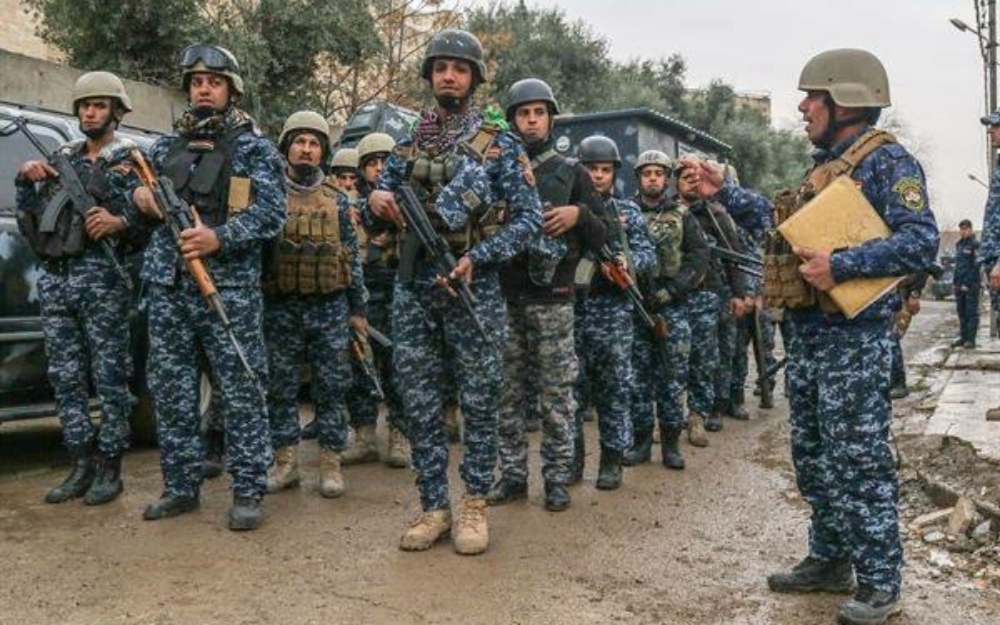While this month marks the first anniversary of the Iraqi-proclaimed victory over the Islamic State (IS) terror group, U.S.-backed Iraqi forces are still trying to hunt down remaining IS militants as the extremist group returns to its insurgent roots.
In a televised address on December 9, 2017, former Iraqi prime minister Haider al-Abadi announced the defeat of IS and the end of Iraqi campaign to recapture its territory.
While many considered IS obliterated following the declaration, recent reports show the militant group is still active in parts of the country and increasingly has been assassinating important figures, bombing Iraqi forces and kidnapping civilians.
On Tuesday, security forces said IS militants disguised in Iraqi uniforms entered al-Amrini, 20 kilometers south of Mosul, and killed its “mukhtar,” or leader, al-Shaeikh Raghib Abid al-Hadi al-Badrani. His tribesmen protested the killing, saying the lack of Iraqi army patrols gave IS militants free mobility in Nineveh province villages.
Ahmad Hazm al-Badrani, a spokesman for the Sunni tribe, said the village head was sleeping when IS fighters broke into his home.
“They took him from his bedroom and walked him outside his house for 100 meters before shooting him,” al-Badrani said.
Sunni tribal force
During the Iraqi campaign to recapture Mosul last year, the al-Badrani tribe had a local force of nearly 600 members fighting alongside the Sunni Tribal Mobilization Forces against IS. The Iraqi government later dismantled the force.
“We hold security forces of Nineveh accountable for the recent breaches in our area. We ask them to arm us if they are not able to contain the situation,” the spokesman told VOA.
The killing of al-Badrani was not an isolated attack. Iraqi village heads have found themselves the targets of IS militants for months. Michael Knights, an Iraq military analyst and senior fellow at the Washington Institute, told VOA his research showed that IS insurgents have killed an average of 8.4 village heads per month since January 2018.

“ISIS fighters see villages as easier targets because they know big cities like Mosul are well-guarded by security forces, and residents, who are very disillusioned by IS destruction, will easily report them,” Knights said, using an acronym for Islamic State.
Smaller communities feel less protected and are less keen on cooperating with security forces, he said.
“Village members know ISIS can walk into their village anytime, kill the most important person there and leave,” Knights said.
Knights said the Iraqi government needs to recruit local community members to protect the safety of those isolated villages.
IS regrouping
Iraqi officials say the IS attempt to regroup in Iraq and resize areas is not a surprise and their forces are well-prepared to prevent such moves.
Iraqi Prime Minister Adil Abdul-Mahdi in a press conference last month warned that hundreds of IS militants in Syria’s eastern province of Deir el-Zour were attempting to cross into Iraq.
“Iraqi forces are carrying out their duties to pre-empt any attempts by ISIS to infiltrate the border and cross into Iraq,” Abdul-Mahdi told reporters.
There are no official data from the Iraqi government on IS remnants in the country. A recent report from Center for Strategic and International Studies (CSIS) said the group might still have 20,000 to 30,000 militants in Iraq and Syria, with an estimated 10,000 to 15,000 in Iraq.
According to the CSIS report, The Islamic State and the Persistent Threat of Extremism in Iraq, IS attacks against Iraqi government targets increased from 2017 to 2018. It said the group was still claiming an average of 78 attacks per month in Iraq — higher than the average for 2016 but lower than 2017.
Disputed territories
Maxwell Markusen, the author of the report, told VOA his findings showed IS insurgency had been particularly sustained in disputed territories, with the number of attacks more than doubling in Kirkuk province from 2017 to 2018.
The vast disputed area, consisting of Kirkuk and parts of Nineveh, Saladin and Diyala provinces, has been a point of high contention between the central government and the Kurdistan Regional Government for decades. The Kurdish Peshmerga forces were forced out of the territories shortly after a Kurdish referendum for independence was held in September 2017. The two sides then stopped joint counter-IS operations.
“The ability of Iraqi forces to conduct targeted raids in disputed territories is in my opinion the most important element of the mission to press any IS activity,” Markusen said. “If you look at what’s going on right now, there are very limited operations and the ability of the government to target IS has been significantly reduced. … If it’s really to be attributed to one thing, it is likely the lack of joint patrols that haven’t taken place since October 2017.”
The role of Iranian-backed Shiite militias in exacerbating Shiite-Sunni tensions and the failure of the Iraqi government to address factors that contribute to instability, such as slow reconstruction of war-torn areas, economic stagnation and corruption, are also among useful recruiting tools for a sectarian-fueled IS insurgency, he said.
“I think that it is going to get worse if there is a failure to address the political issues in Kirkuk,” and the rebuilding in Nineveh, Saladin and other parts of Iraq that have been decimated will take longer, he said. (VOA)














